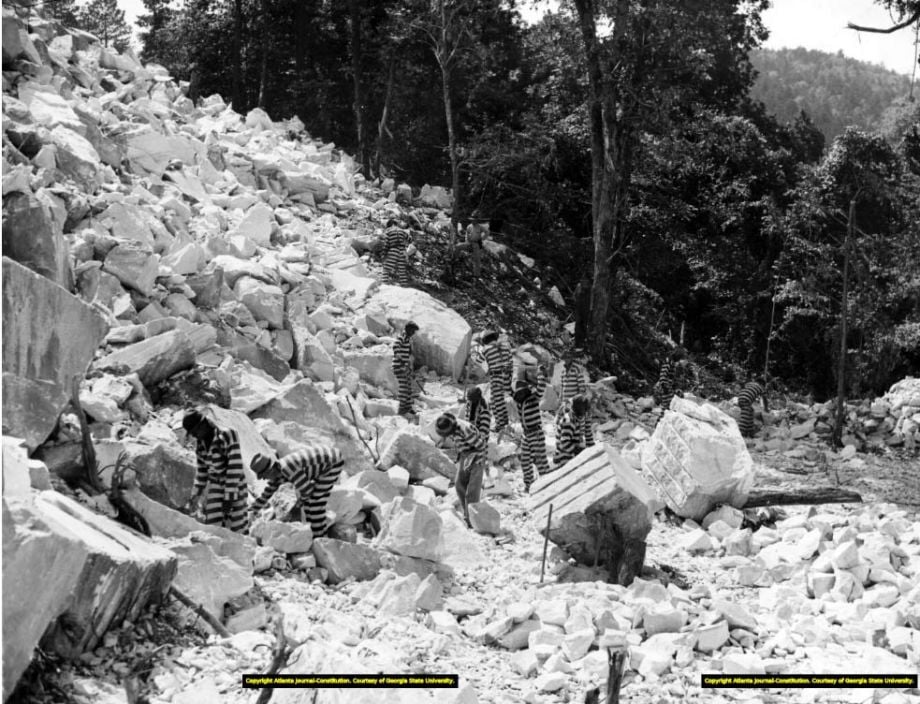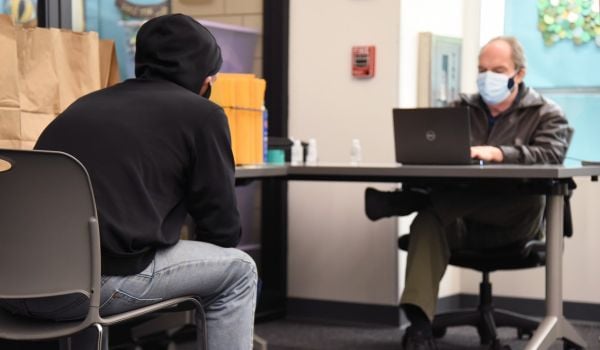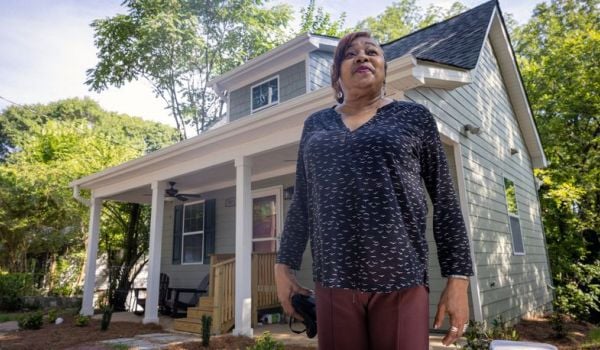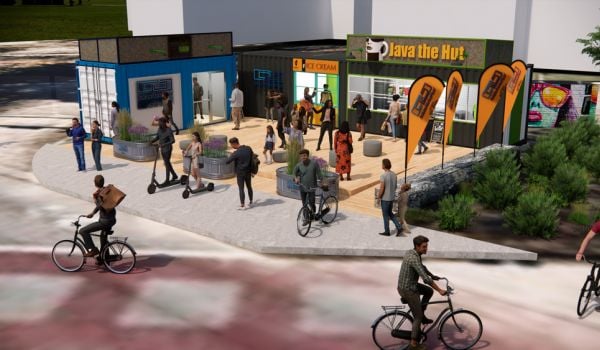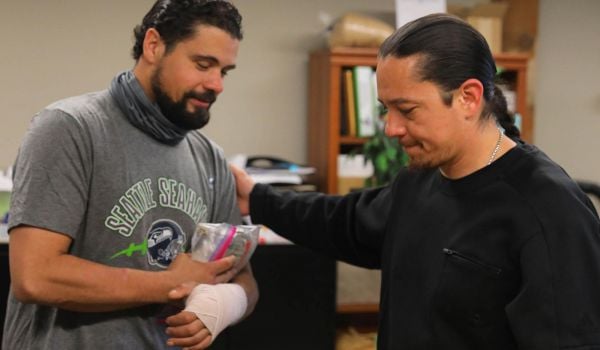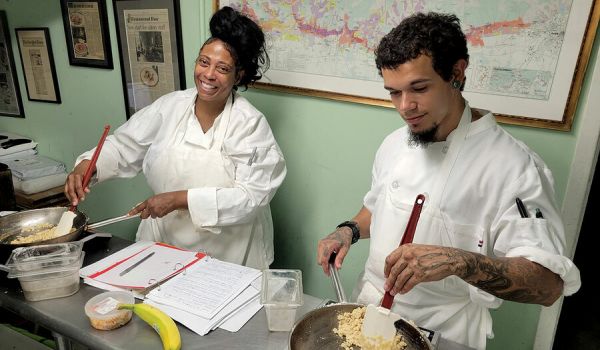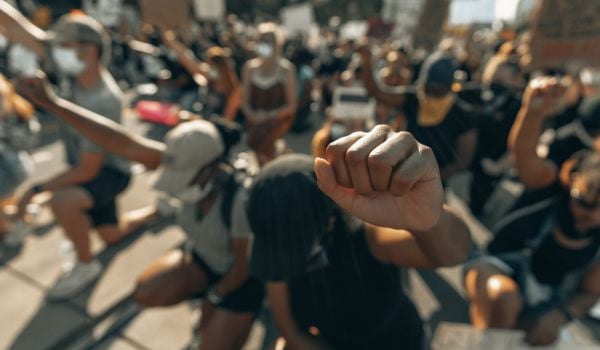The history of Atlanta is set in brick.
It began after the Civil War, when slavery gave way to another form of labor: convict leasing. Black people, many of them children, were arrested for such “crimes” as talking loudly in the company of a white woman or not stepping off the sidewalk when a white person approached. Private companies would then lease these incarcerated people for unpaid labor in inhumane conditions.
“It’s one of those pieces of history that nobody really knows about,” says Donna Stephens, an environmental activist in Atlanta. “There’s so many people that I’ve spoken to that are just in shock about that part of American history. [To them] it’s as if slavery ended and [Martin Luther King Jr.] showed up.”
One of the outfits that profited off convict labor was the Chattahoochee Brick Company in Atlanta. For 30 years, workers there made 200,000 bricks a day—the very bricks that built the city during a formative period. These bricks are throughout downtown and in older buildings and sidewalks, says Douglas A. Blackmon, author of a Pulitzer Prize-winning book on convict leasing. The workers, 30% of whom were children, were whipped, fed rotting food and warehoused in substandard housing. Some were worked to death.
Years later, Atlanta is beginning to reckon with its history of convict labor and the role it has played in not only the city but throughout the South. Plans exist to memorialize the former site of Chattahoochee Brick and at the recently opened Westside Park a few miles away.
Atlanta will be the first city to acknowledge convict labor on a large scale.
“It’s time to memorialize those people,” says Stephens, founder of the Chattahoochee Brick Company Descendants Coalition. “They gave so much to America. They rebuilt the South.”
The ugly history of convict labor was officially ignored for many years. Blackmon’s book on the subject, which explored Chattahoochee Brick, came out in 2008. PBS adapted it into a documentary in 2012. Both of these media led to heightened interest in Atlanta, Stephens says.
A few years later, Chattahoochee Brick further entered public consciousness. Lincoln Energy Solutions planned to build a fuel terminal with mega oil tanks on the former site.
Stephens remembers when she found out.
“I had to sit down because it was just a horrible thought that the property would be desecrated in that way from an environmental stance, but also from a historical culture vantage point,” she says.
The 75-acre site is on the banks of the Chattahoochee River, which was named the nation’s most endangered waterway in 2016 by the nonprofit American Rivers. Stephens banded together with local groups and stopped the industrial development.
At the end of 2021, Atlanta announced that it will buy the property from Lincoln Energy and work with the community to transform it into a park and convict labor memorial.
Chattahoochee Brick is also a symbol of the wealth that convict labor created for some of the most prominent Atlantans. The company was owned by James English, who was an Atlanta mayor, bank president and owner of several companies. Banks he owned later became part of Wells Fargo and Truist, Blackmon says.
English’s name also appears throughout the city. For example, Stephens lives in the English Park neighborhood. (The Chattahoochee Brick Company Descendants Coalition is leading an effort to rename the park that gives the neighborhood its name.)
Chattahoochee Brick is not Atlanta’s only effort to memorialize convict labor. At Bellwood Quarry, workers were chained together and forced to remove granite. Like Chattahoochee bricks, this granite was used to build Atlanta. The quarry is now part of Westside Park, the largest park in the city.
The National Center for Civil and Human Rights, a museum in Atlanta, is working with other organizations to create a memorial at the quarry. A group of 20 stakeholders has committed to a two-year process that includes learning about the history, identifying descendants of convict leasing and meeting with people across the city, says center CEO Jill Savitt. (Stephens is involved with this project.)
Savitt says there are a lot of ideas for memorialization. Some people want to focus on Black resilience. Others want a stone or brass sculpture, a public performance space or a place for art by Black artists.
Savitt says Atlanta’s convict labor memorialization is connected to the national conversation around Confederate monuments, police brutality and systemic racism. It calls into question who receives a place of honor in public memory.
“Of course you learn history in school, but history is being documented all around us in place names, in who you honor, who you venerate and what narrative of history gets absorbed from that,” she says. “You have the English name memorialized and no indication of this other history that went on in our city that literally made the brick and mined the granite that built the city.”
Labor by incarcerated people still plays a role in the U.S. They make furniture and military equipment and staff call centers. Depending on the state, wages range from 14 cents to $2 an hour for prison maintenance labor. Eight states, including Georgia, don’t pay incarcerated people at all for their work.
Prison labor appeared in local Georgia news in the midst of 2020’s Black Lives Matter protests. For 20 years, the University of Georgia employed incarcerated people to do farm work at its Vidalia onion research center. Students raised concerns in 2020 and the university ended the program shortly afterward.
Blackmon, a professor in Georgia State University’s Creative Media Industries Institute, says these memorialization efforts go beyond Chattahoochee Brick and Westside Park. Places all over the South used convict leasing to suppress Black people. The epicenter was Birmingham, Alabama, which Blackmon says continues to ignore that history.
Still, there’s a higher awareness of convict leasing today compared to 15 years ago, he says.
“It’s really part of the larger process of cities, states and regions grappling with the legacy of slavery before the Civil War, the way that the memorialization of the Civil War itself was hijacked into a kind of propaganda about ‘the Lost Cause,’ and the abuses of African Americans in the 100 years after the Civil War,” he says. “The unwinding of this level of disinformation in a whole society is something that’s going to take a long time and has to be thoughtful and a little bit exhausting.”

Adina Solomon is a freelance journalist based in Atlanta. She writes on a range of topics with specialties in city design, business and death. Her work has appeared in The Washington Post, CityLab, U.S. News & World Report, and other national and local outlets.

